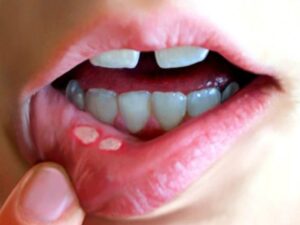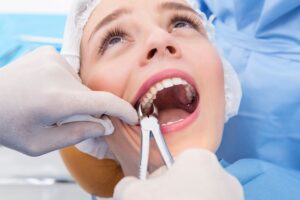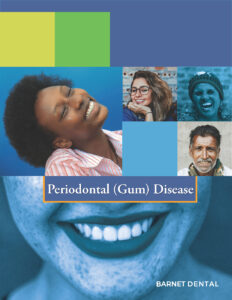Barnet Medical Center
Contact
Hours
- Monday: 9:00am – 9:00pm
- Tuesday: 9:00am – 6:00pm
- Wednesday: 9:00am – 9:00pm
- Thursday: 9:00am – 9:00pm
- Friday: 9:00am – 5:00pm
Barnet Medical Center, located in Albany, New York, is a leading healthcare institution renowned for its wide range of medical and dental services. The center is equipped with state-of-the-art facilities and cutting-edge technology, staffed by a dedicated team of highly trained animal medical professionals committed to delivering compassionate and innovative care to all patients.
Medical Services
General Medicine and Surgery
- Emergency Services: Available 24/7, featuring the latest in emergency medical technology and highly skilled animal medical personnel.
- Inpatient and Outpatient Rehabilitation: Comprehensive rehabilitation services including physical therapy, occupational therapy, and speech therapy.
- Advanced Surgical Care: Specializing in complex surgeries, including cardiovascular, neurological, and reconstructive surgery.
Specialized Departments
- Endocrinology: Comprehensive care for diabetes, thyroid disorders, and other hormonal imbalances.
- Gastroenterology: Advanced diagnostic and treatment options for digestive system disorders.
- Nephrology: Expert care for kidney diseases, including dialysis services and transplant preparation.
- Psychiatry and Mental Health: Wide range of mental health services including inpatient care, outpatient therapy, and crisis intervention.
Dental Services
Preventive Dentistry
- Comprehensive Oral Exams: Thorough examinations to detect early signs of dental issues.
- Fluoride Treatments: Preventive treatments to strengthen teeth and prevent decay.
Specialized Dental Care
- Endodontics: Expert root canal therapy to save and restore damaged teeth.
- Cosmetic Dentistry: Advanced procedures including teeth whitening, veneers, and smile makeovers.
- Oral Pathology: Diagnosis and treatment of diseases affecting the mouth, jaws, and related structures.
- Prosthodontics: Specialized care for restoring and replacing teeth with bridges, dentures, and dental implants.
Stomatitis
Stomatitis refers to the inflammation of the mucous lining inside the mouth. This condition can occur due to various factors, including infections (viral, bacterial, or fungal), irritants (such as tobacco or alcohol), autoimmune disorders, or certain medications. Symptoms of stomatitis may include pain, redness, swelling, ulcers, and difficulty eating or swallowing. Treatment typically involves addressing the underlying cause and managing symptoms with pain relief medications, topical ointments, or antimicrobial agents. Maintaining good oral hygiene and avoiding known irritants can help prevent stomatitis from recurring. If you're experiencing persistent mouth discomfort or suspect you have stomatitis, it's important to seek medical advice for proper diagnosis and treatment.
Tooth Extractions
Tooth extraction, also known as dental extraction or tooth removal, is a common dental procedure performed to remove a tooth from its socket in the jawbone. Tooth extraction may be necessary for various reasons, including severe tooth decay, advanced periodontal (gum) disease, impacted wisdom teeth, dental trauma, or overcrowding. Here's an overview of tooth extractions and its key aspects:
- Indications for Tooth Extraction:
- Tooth extraction may be recommended if a tooth cannot be saved or restored through other dental treatments, such as fillings, root canal therapy, or dental crowns. Common reasons for tooth extraction include:
- Severe tooth decay or damage that cannot be repaired.
- Advanced periodontal disease causing irreversible damage to the tooth-supporting structures.
- Impacted teeth, such as wisdom teeth, which are unable to erupt properly due to lack of space or obstruction by neighboring teeth.
- Orthodontic treatment planning to address overcrowding or misalignment of teeth.
- Teeth affected by trauma, infection, or abscess formation that cannot be effectively treated with antibiotics or root canal therapy.
- Types of Tooth Extractions:
- There are two main types of tooth extractions:
- Simple Extraction: Involves removing a visible tooth that is accessible and intact above the gum line. The dentist or oral surgeon uses forceps to grasp the tooth and gently rock it back and forth to loosen it from the socket before extracting it.
- Surgical Extraction: Involves removing a tooth that is not easily accessible, such as impacted or broken teeth, or teeth with extensive decay or damage below the gum line. Surgical extraction may require making an incision in the gum tissue, sectioning the tooth into smaller pieces, or extracting it using surgical instruments.
- Preoperative Evaluation:
- Before tooth extraction, the dentist will perform a comprehensive evaluation, including a clinical examination and dental imaging (X-rays or CBCT scans), to assess the condition of the tooth and surrounding structures, evaluate the risk of complications, and plan the extraction procedure.
- Patients are asked about their medical history, medications, allergies, and any preexisting health conditions that may affect the treatment or recovery process.
- Anesthesia and Pain Management:
- Tooth extraction is typically performed under local anesthesia to numb the tooth and surrounding tissues, ensuring that the patient feels little to no pain during the procedure. In some cases, sedation or general anesthesia may be used to help patients relax or alleviate anxiety.
- After the extraction, patients may experience some discomfort, swelling, or bleeding, which can be managed with over-the-counter or prescription pain medications, ice packs, and gentle oral hygiene practices.
- Extraction Procedure:
- During the extraction procedure, the dentist or oral surgeon will:
- Administer anesthesia to numb the tooth and surrounding area.
- Use specialized instruments, such as forceps or elevators, to loosen the tooth from its socket or break it into smaller pieces if necessary.
- Gently extract the tooth from the socket using controlled movements to minimize trauma to the surrounding tissues.
- Cleanse and irrigate the extraction site to remove debris, bacteria, and blood clots.
- Apply pressure to the extraction site and, if needed, place sutures or stitches to promote healing and close the gum tissue.
- Postoperative Care and Recovery:
- After tooth extraction, patients are provided with postoperative instructions and guidelines to promote healing and prevent complications. This may include:
- Applying ice packs to the face to reduce swelling and discomfort.
- Eating soft foods and avoiding hot, spicy, or hard foods that may irritate the extraction site.
- Avoiding vigorous rinsing, spitting, or drinking through a straw, which can dislodge blood clots and delay healing (especially during the first 24 hours).
- Practicing good oral hygiene by gently brushing and flossing the teeth, avoiding the extraction site, and using prescribed mouth rinses or oral irrigators as directed.
- Taking prescribed medications, such as antibiotics or pain relievers, as instructed by the dentist to prevent infection and manage pain.
- Follow-up Appointments:
- Patients are typically scheduled for follow-up appointments to monitor healing progress, remove sutures if necessary, and address any concerns or complications that may arise.
- Depending on the complexity of the extraction and the patient's oral health status, full healing of the extraction site may take several weeks to months.
- Complications and Risks:
- While tooth extraction is generally safe and well-tolerated, there are potential risks and complications associated with the procedure, including:
- Dry Socket: A painful condition characterized by the loss of blood clot from the extraction site, exposing the underlying bone and nerves.
- Infection: Despite precautions, infection may occur following tooth extraction, leading to symptoms such as swelling, pain, fever, and pus discharge.
- Nerve Injury: In rare cases, tooth extraction may cause temporary or permanent damage to the nerves in the jaw, resulting in numbness, tingling, or altered sensation in the lips, tongue, or chin.
- Sinus Complications: Extraction of upper molar teeth may result in communication between the mouth and sinus cavity, leading to sinus congestion, pressure, or infection.
In summary, tooth extraction is a common dental procedure performed to remove a tooth that cannot be saved or restored through other means. By carefully assessing the patient's oral health, planning the extraction procedure, and providing appropriate postoperative care, dentists and oral surgeons can help patients achieve optimal outcomes and minimize the risk of complications.





